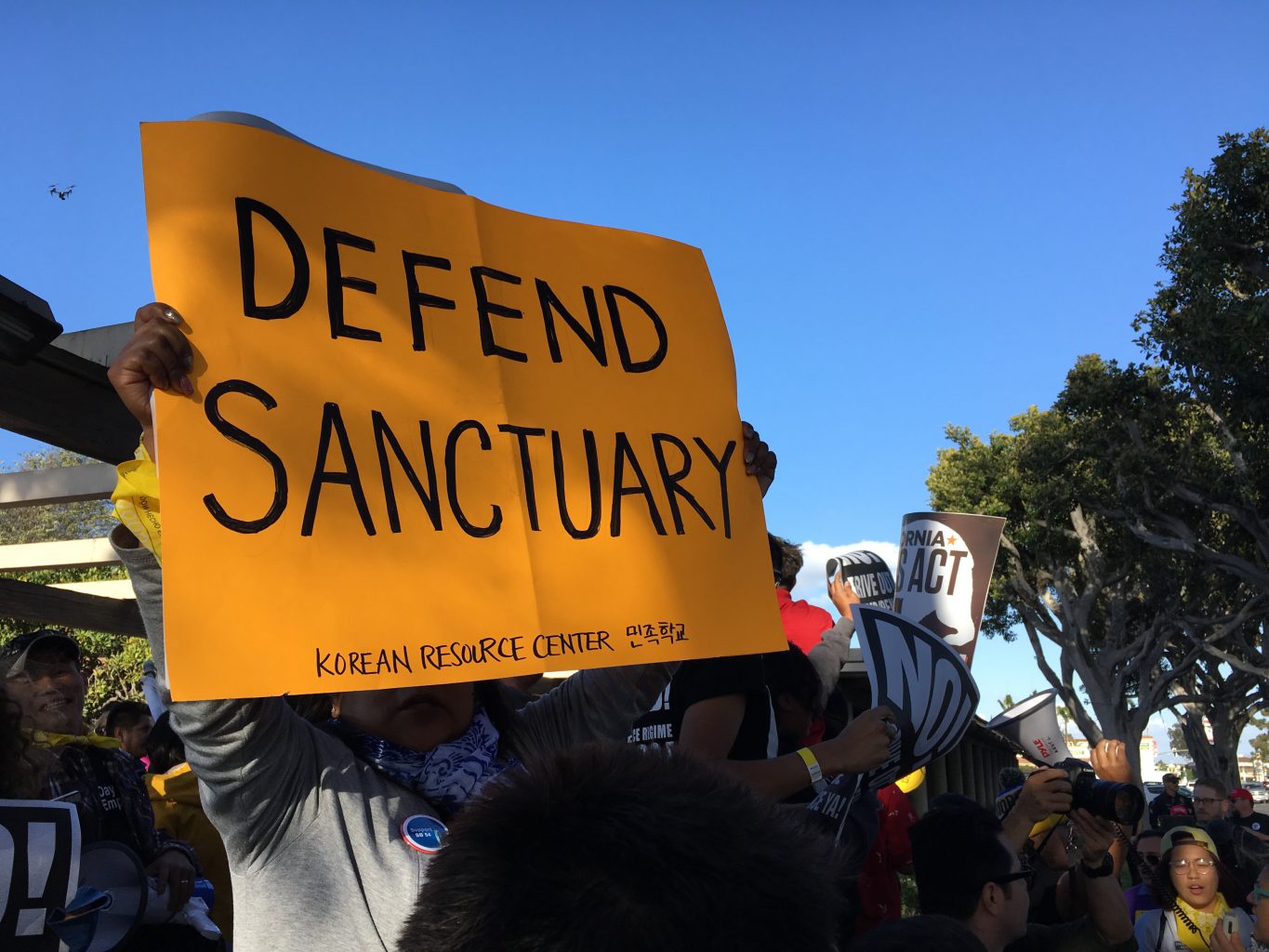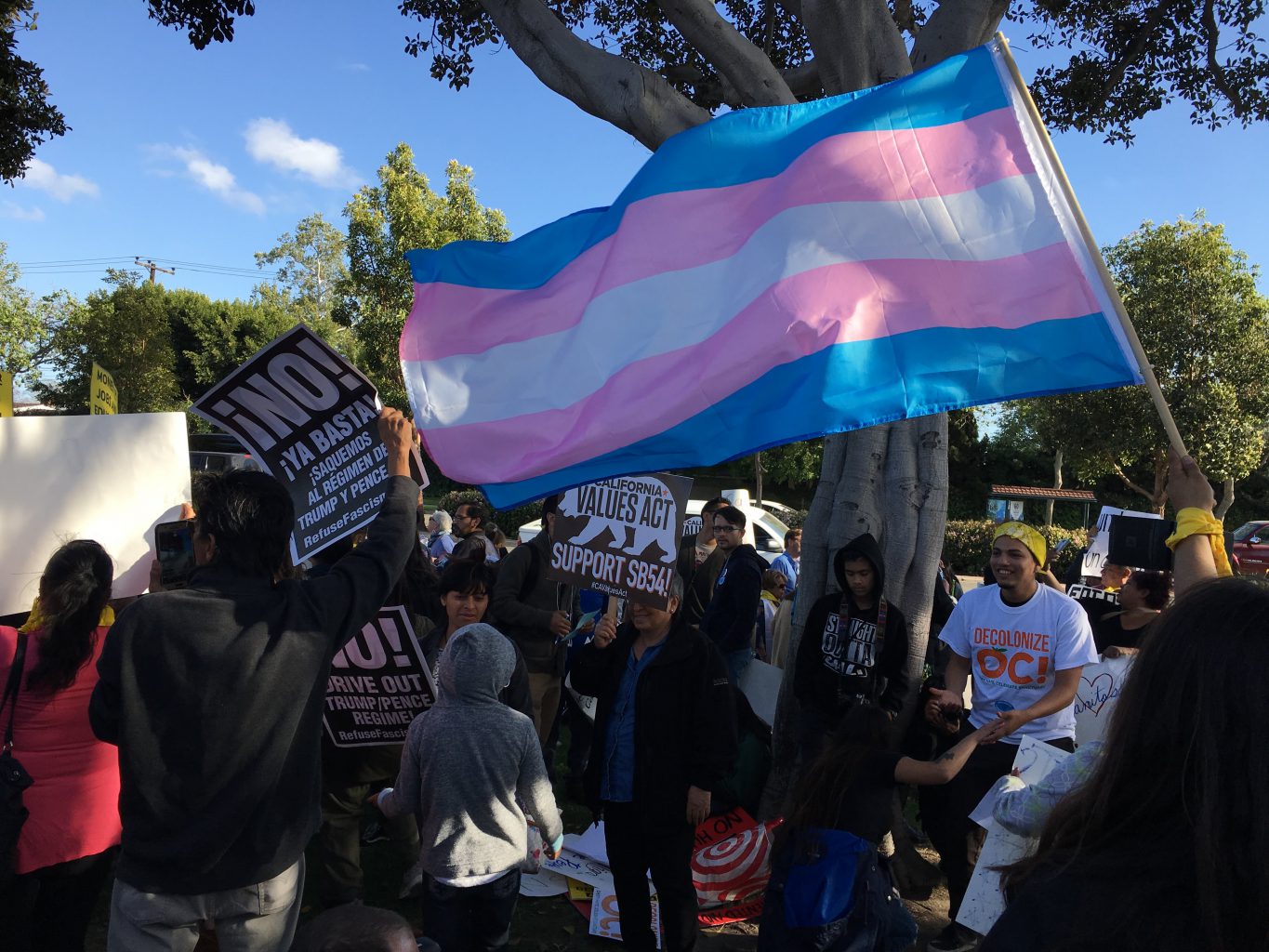Orange County has been going through a political metamorphosis. Its city council and town hall meetings have been home to uproar and debate around “Sanctuary City” laws and reckonings with its past of racist community leaders and KKK members in city government – such as William Fanning.
This was once a place where the Klan burned crosses to announce their presence to the population, and where Black residents were not allowed in the city of Brea after dark. Brea is but one example of the “sundown town” phenomenon. It also had KKK members within its city government for much of the 1920s.

Credit: Christian Rangel
But much like our nation as a whole, progress has been made. The traditionally Republican-dominated county, the birthplace of Richard Nixon, was a crucial focus of Democratic efforts to flip the House of Representatives in 2018. This “Blue Wave” was successful, and Representatives Gil Cisneros, Katie Porter, and Harley Rouda joined the ranks of House Democrats. As we head to the polls on Nov. 3, and beyond, we must work to keep up that momentum, and go further. But looking back to where we have been, it is all too easy to slip backwards.
Where just a couple decades ago it would have been unthinkable, I was a part of a program of cultivating LGBTQ+ community leaders and activists, acting through High School Gay-Straight alliances. But then, when the results of the 2016 came down, I helped console members of our GSA, distraught at what Trump’s America would mean for our community.
In January 2018, a neo-Nazi terrorist murdered Blaze Bernstein, an openly gay, Jewish youth who was visiting his family in Lake Forest.
In 2018, I was present at the city council votes and surrounding protests around SB54, California’s State “Sanctuary Law.” Orange County’s Board of Supervisors objected to tha law and joined a lawsuit filed by the Trump administration against it.
In 2020, O.C. became another dot on the map during this summer of upheaval and protests sparked by the killing of George Floyd, with thousands of young people taking to the streets to say “Black Lives Matter.” I took heart in seeing so many people my age and younger take up the demands for justice. Our collective actions changed the narrative and the conversation in society at large. But as with every shift in action, there is a reaction: and O.C. is no stranger to reaction.
On Saturday, Sept. 26, 2020, the group Caravan 4 Justice, joined by other organizations such as Clarity OC, Refuse Fascism, and OC Know Justice Know Peace, organized a “March for Equality” event outside of the Yorba Linda Public Library. Though march organizers planned for a nonviolent, peaceful march, belligerent Trump supporters and anti-Black Lives Matter forces had other plans. Before the day was through, several people would be injured, weapons such as tasers and batons would be brandished, and one activist, a leader of Caravan 4 Justice, Tatiana Turner, would be in police custody, to be charged with attempted murder and held on $1 million bail.
From the outset of the event, I could see the counter-protesters assembling on the opposing end of Imperial Highway. Its six lanes of traffic and a center divider was all that stood between them and the Caravan 4 Justice staging area in the parking lot of the Yorba Linda Public Library. Their bright blue and white colored flags were emblazoned with the name of Donald J. Trump, who would just days later call upon the white nationalist, openly chauvinist “Proud Boys” group to “stand back and stand by” on a national debate stage.

The crowd of pro-Trump, anti-BLM counter-demonstators was visibly whiter and older than the more diverse, yet smaller crowd of pro-BLM marchers who had assembled in the lot, listening to speakers and chanting the names of those killed by law enforcement. Just 72 hours earlier a grand jury had declined to indict the cops who had killed Breonna Taylor for the actions which led to her death.
The two opposing sides that faced off in Yorba Linda in September represented two paths that our Orange County communities, and the country as a whole, can go down. One of reckoning, seeking to actively dismantle white supremacy, or one that reinforces that, a chilling echo of the worst and most unvarnished, oppressive aspects of our history.
Which one we get, and will pass down to future generations, is up to us.
Let’s not forget that the whole nation, and even the world, has their eyes on us. Southern California is influential in a way that few other places are, and Orange County is a potential powder-keg in the midst of a national reckoning over white supremacy, and a growing backlash that seeks to reverse verdicts, reset terms, and to maintain a status quo that many people, particularly younger people and people of color, find intolerable, and will not go quietly along with.
Let’s stand steadfast with Black lives, and actively build a future that will be livable, safe, and inclusive to all of our residents. While voting, especially in this election is important, we cannot allow that to be the only expression of our desire for that future. There has to be a decisive electoral defeat for those who seek to reinforce and strengthen institutional racism and police murder.
This means voting against the party which represents, at present time, the most immediate threat to Black lives and which gives the most blatant backing to police and their brutal excesses: The Republican Party, headed by the Trump/Pence ticket.
Additionally, ongoing work needs to be done among all strata of people to come to terms with the actual history of this country, and its founding and ongoing legacy rooted in slavery and genocide. Important resources to this end can be found in the New York Times 1619 project and the American Crime mini-documentary series by filmmaker David Zeiger.
This is not just about the subjective factor – who it is we, as individuals, are going to be, as important as that is. It’s about our collective conscience and our shared spaces, and the policies that shape how we live our lives and reflect what we value. The contrast of values could not be sharper: Sanctuary or an Orange Curtain? Inclusion or reaction? The future or the past?
